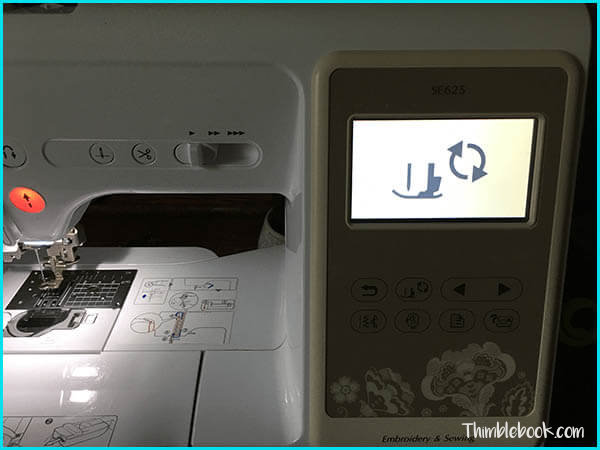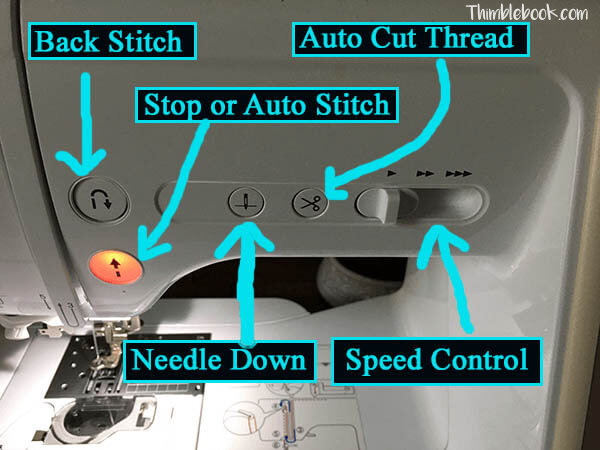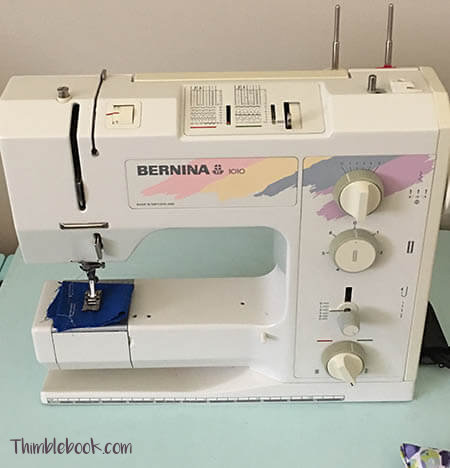Computerized vs Mechanical Sewing Machine
*This post may include affiliate links, which allow me to make a small commission off your purchases. The money is earned at no additional cost to you.
The differences between computerized vs mechanical sewing machines are great. In this brief blog, we will discuss the main benefits and disadvantages of each. Hopefully, this will help you to make an informed decision about getting a computerized vs mechanical sewing machine.

Let’s start with the advantages of owning a computerized sewing machine.
1.Computerized sewing machines allow you to save settings. For instance, you may have started a blouse with a 2.4 stitch length and a zigzag stitch width of 3. Since all your settings can be saved, it means you can move to another project and pick up where you left off with the blouse at a later date.
2. You get more stitches on a computerized machine. There are often many more stitch patterns to choose, which can be very fun if you enjoy using decorative stitches to embellish projects.

3. Safety features are always present on computerized sewing machines. For instance, I can set the lock button on my Brother SE625 to stop the machine from being able to sew. The stop button is a great way to keep small children from playing on the sewing machine and getting hurt. It is also a great feature to use when you are changing out needles or presser feet.

4. Time saving features are always present on computerized sewing machines. Depending upon the model, you may have:
- An automatic thread cutter (can have back toe tap to cut thread)
- Bobbin almost empty alerts
- Push to stitch option for foot pedal free sewing
- Low, medium, or high speed settings
- Digital display with tutorials on different sewing techniques
- Speedy electronic bobbin winding
Now, let’s tackle the disadvantages of owning a computerized sewing machine in this computerized vs mechanical sewing machine debate.
- Computerized sewing machines have a lot more parts, which means more can go wrong with them. We are talking about circuit boards, sensors, capacitors, and so much more. *However, I have known some nice computerized sewing machines to last 15+ years.
- Like computers, computerized sewing machines can become obsolete. This means some of the more high-end models are no-longer able to receive updates. Also, when new parts are needed, you’ll often find them 100% unavailable or more expensive than replacing the entire sewing machine (due to their obsolete nature).
- Certain electronic notifications can be annoying. For example, bobbin almost empty pop ups drive me insane when working on my Brother SE625.
- 90% of the time, it costs more to have an computerized sewing machine serviced. Plus, it is a whole lot more difficult to self-service.
- Expect the occasional error messages or requests for a reboot. A thread knot, lint, or even just removing the needle plate to clean, causes many electronic sewing machines to throw error messages. Sometimes, the machine will even asks users reboot. These things are a frustration and can steal the joy in sewing up simple projects.

Here are a few advantages to owning a mechanical machine.
- Mechanical machines are simple. Therefore, they are better for beginners. Without so many features, the sewing process becomes a lot less intimidating.
- Mechanical sewing machines last longer than computerized machines because they have fewer moving parts.
- Mechanical machines are easier to repair, which means anyone can get a repair book and learn how to fix minor issues at home.
- You don’t have to worry about a mechanical sewing machine going obsolete. Plus, if you get a really good machine, it is an item that can be passed down to someone else.
- Mechanical sewing machines allow people to learn how to sew for real – not artificially! Without computerized features, you must learn more! For example without…
…additional stitches, one must learn how to create new stitches using free motion techniques.
…digital embroidery, one must learn how to trace designs and stitch them out using free motion skills.
…automatic threading, one must 100% learn how to thread a sewing machine.
…automatic speed control, one must learn how to control speed manually.
…without built in stitch settings, one must learn the different stitch width and length requirements for each project.
Here are a few disadvantages to owning a mechanical machine.
- It can be too slow. When there is a detailed sewing project, it becomes too time consuming to manually create specialty stitches and/or embroidery.
- Mechanical sewing machines often become boring once one advances beyond the beginner stage. Non-beginners just like to learn new gadgets and don’t mind upgrading.
- It isn’t easy to set knobs in the exact same position each time. Therefore, stitch width and/or length is never 100% like it was set before. To perfectionists, this is a big problem. However, it isn’t that noticeable to the average person.
It’s a wrap!
Hopefully, this article will help you to make an informed decision in the computerized vs mechanical sewing machine debate. Personally, I think each kind of sewing machine has it’s place. It all depends on your circumstances. Let me know what you think in the comments. Happy sewing!
Other interesting articles
3 Comments
Leave a response


THANKS FOR THIS INFORMATION. CAN YOU HELP ME TO FIND SINGER 500 WITH ALL THE ASSERCORIES IN GOOG CONDITION TO BUY? THANKS AGAIN
Try goodwill online and your local Craigslist. Thanks for visiting the blog 🙂
I love my modern machines. As you say, they have lovely bells &whistles that often make sewing faster and easier. On the other hand, I love my vintage Kenmores as well. And some of them do certain operations MUCH better than a lovely electronic lady. My beautiful big Brother VQ3000 is fast and easy, it’s designed with a large harp and lots of special stitches. The harp is great for large projects and quilting. But even though she’s double-needle capable, she hates them. My little “Ketherweight” 158-1040 is a dream when sewing with double-needles and she does it fast and dependably. Even though I have a gathering foot for the Brother machine, I’m not fond of the results. But on my 158-14001, it works splendidly. I’m probably off the reservation here, but I swear; different machines have different personalities! What do you think?
* * * * * * * *
P.S. Earlier this year (I think) a woman by the name of Brenda Odom replied to my message in your “Legendary Kenmores” post. She wanted a picture of my machine I call “Bear”, a very old 120-490 Kenmore that is very powerful, having a 1.5 amp motor and a chain drive. I wanted her to know that there are several currently listed on ebay with decent photos. But when I try to reply to her on that post, nothing happens, I just get an error message. Is there any way you could pass along this information to her? I feel badly that I was unable to respond. Thank you!